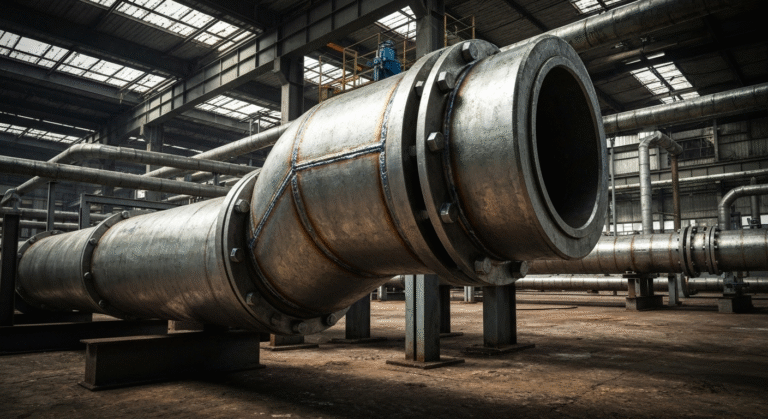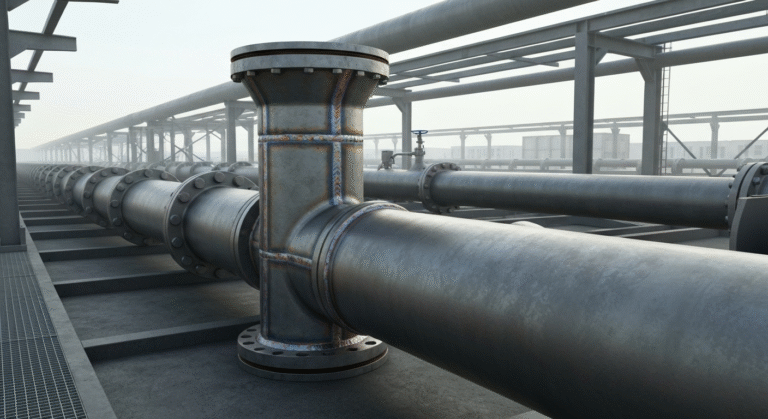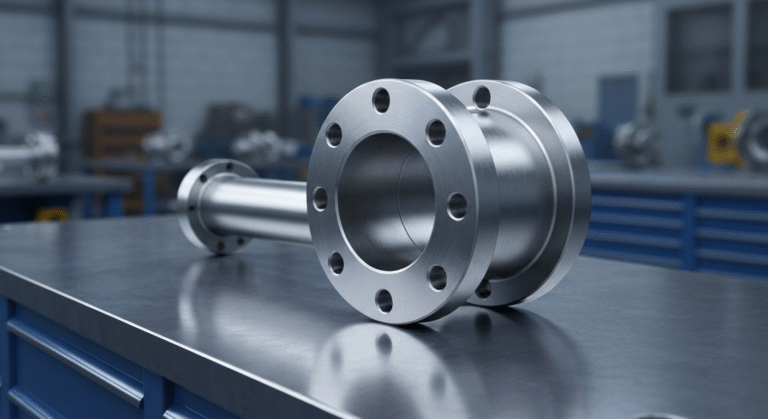-
Yinzhuang Industrial zone,Mengcun county,Cangzhou city,Hebei province,China
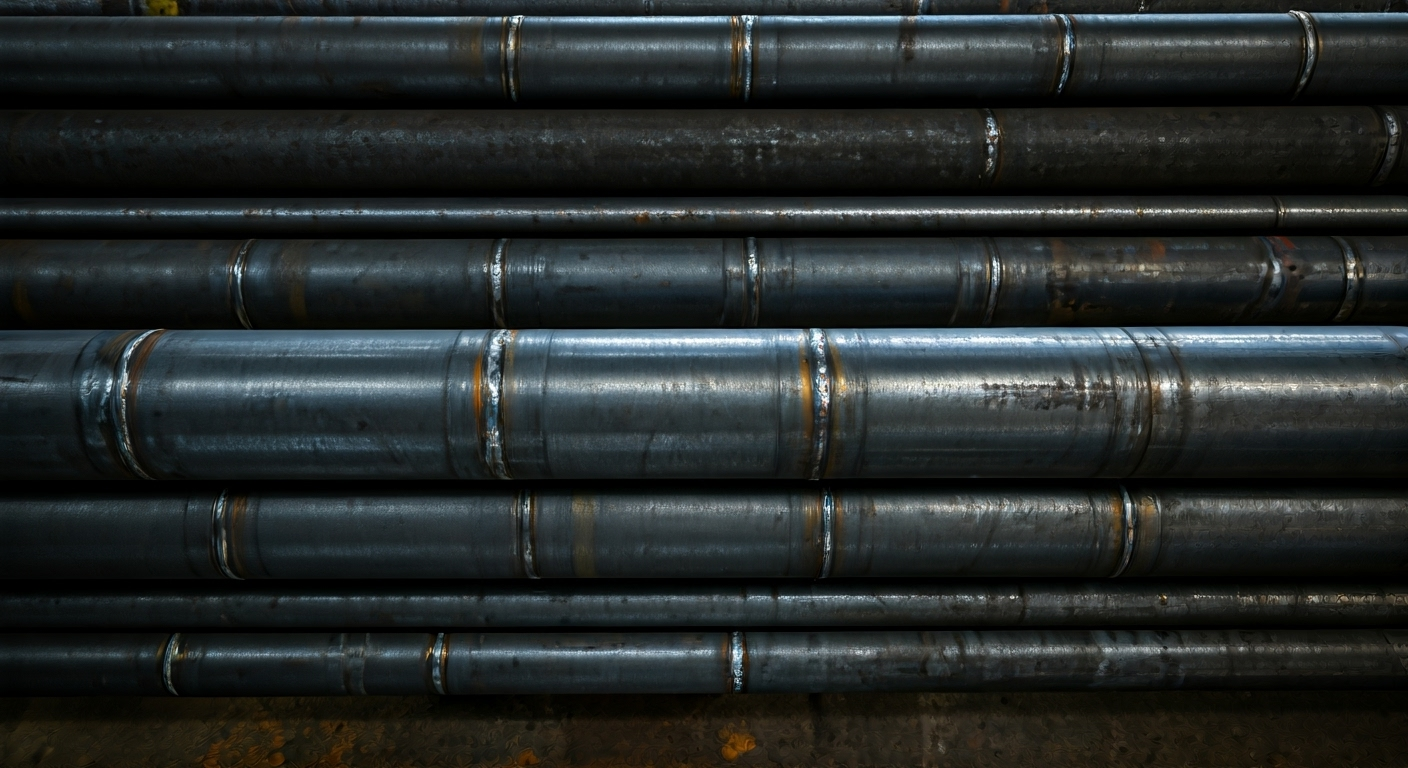
Carbon Steel Butt Weld Equal Tee: Standards Explained
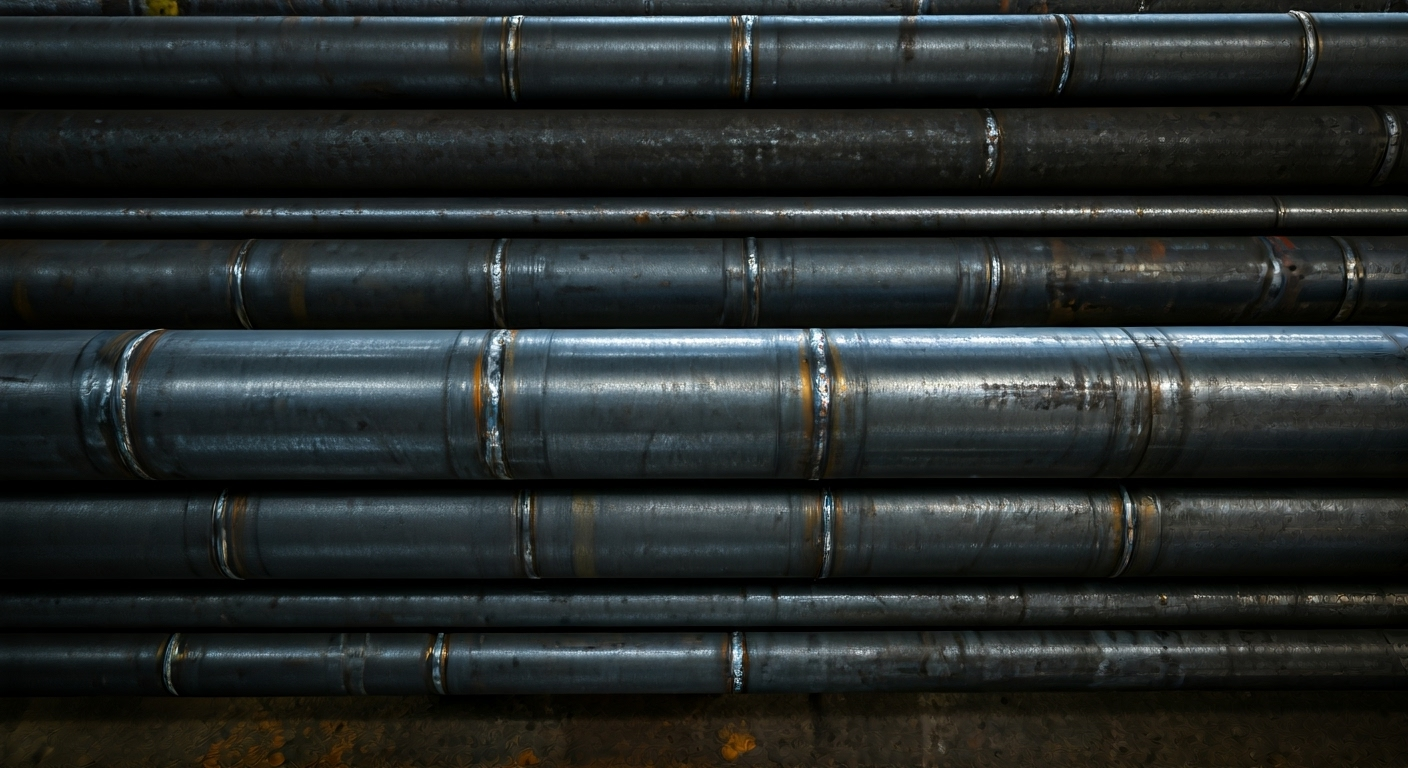
Key Highlights
- Explore the international and Singapore standards like ASME, ASTM, SS, and ISO that govern carbon steel butt weld pipe fittings.
- Understand why dimensional tolerances, material specifications, and inspections are crucial for ensuring high-quality tee fittings.
- Dive into the mechanical properties and features of ASTM A234 WPB BW equal tee products.
- Distinguish between steel equal tees and reducing tees based on their diameters and applications.
- Learn about common surface treatments such as galvanizing, black painting, and packaging methods to maintain product integrity.
- Get answers to FAQs regarding certifications, compliance, and applications across industries.
Introduction
Carbon steel butt weld pipe fittings are often used to join pipes that move gas and fluids. Among all types, equal tee fittings are very common. They are known for their smart shape and strong build. These fittings, along with a straight pipe, are made to follow top rules from around the world and area standards too. This way, you get something that is not only very strong but can also work in many settings. You will see these butt weld and equal tee fittings in oil and gas jobs, water plants, and many work shops. Butt weld equal tee fittings help pipes connect without problems and always work well. Here, you will get to know about the quality these fittings have and what materials are used in them.
Key Quality Standards for Carbon Steel Butt Weld Equal Tee Products
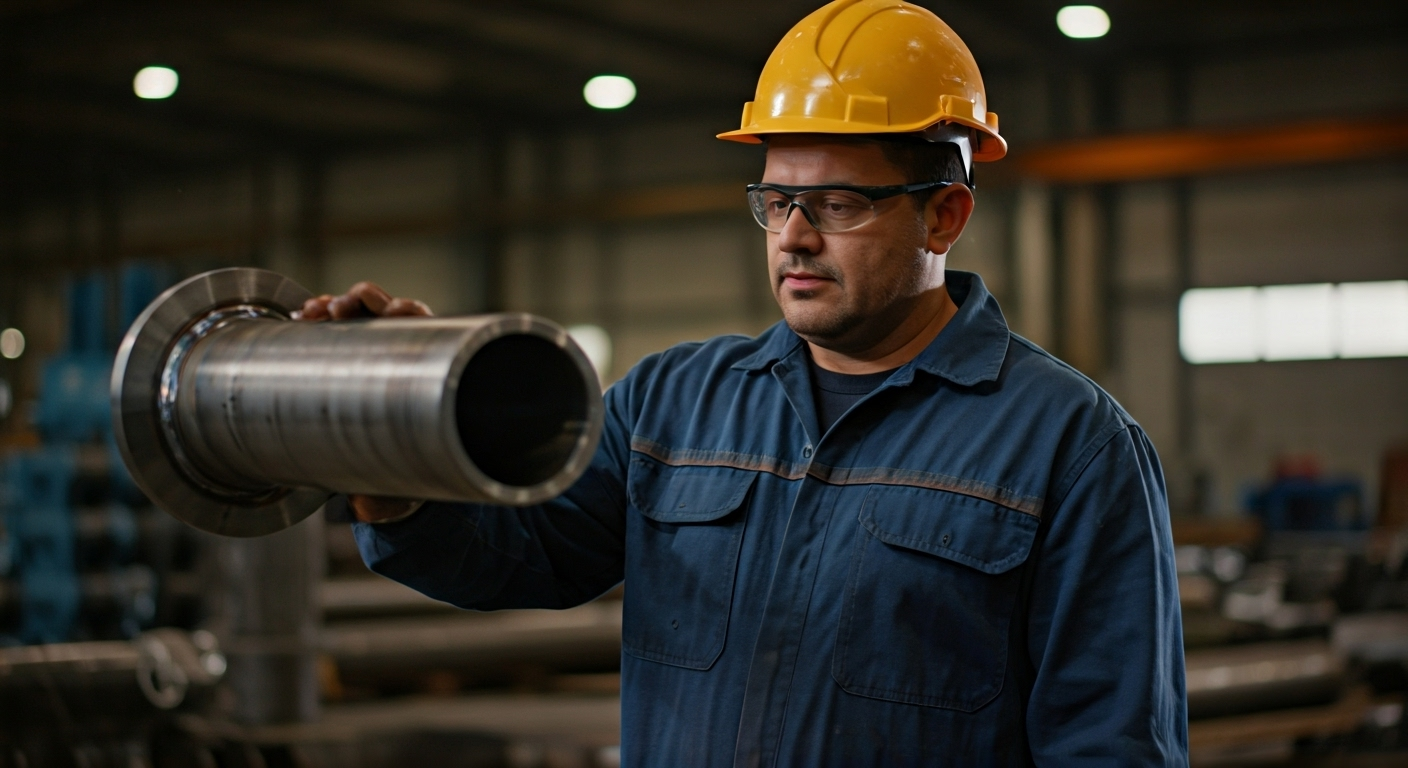
Carbon steel butt weld equal tee products meet strict quality rules. They follow important international and Singapore standards. These standards make sure the tees have the right size and strength for better use in any pipeline network. Being in line with ASTM and ASME standards shows that these fittings are tough and reliable.
There is strong quality inspection on these tees. This includes checking them with radiographic tools and testing the materials. These fittings are tested so they work well even under high pressure or in changing situations. With all these checks, carbon steel butt weld equal tees can be used in many different places like petroleum or chemical plants.
International and Singapore Standards (ASME, ASTM, SS, and ISO)
Different international standards help guide how to make and check the quality of carbon steel butt weld equal tee products. ASME and ASTM set the main rules for size and what the materials should be like. This helps make sure the products work well in many uses. In Singapore, the local rules, like SS, are made to be close to ISO rules. This makes things more steady in both local and global markets. If pipe fittings, carbon steel butt weld fittings, or equal tee parts meet these rules, you can trust they will work the way they should. These steps help pipeline systems run better and lower the chance of problems or delays from reducing pipe and fittings failures.
Dimensional Tolerances and Material Specifications
Dimensional tolerances are very important in keeping the tight fit needed for butt weld equal tees. NPS shows the pipe diameter, while schedule numbers tell about wall thickness. They help make sure the fittings go with the rest of the steel pipe system. Sticking to these size limits is key so that these pipe fittings handle pressure without losing their strength or performance.
ASTM standards for material show what carbon steel pipe fittings need. These include good strength and protection against rust. These things matter most when you put it in tough places where people need reliable and long-lasting steel pipe.
For example, tees with Schedule STD wall thickness are a good mix of being strong and not costing too much. SCH 80 and XS the pipe fittings are for high-pressure systems where you need it to be stronger. Thinking about thickness and type of fittings helps people get the right fit for many uses. This can be in plumbing, factories, or places where chemicals are moved through the pipe with carbon steel pipe.
ASTM A234 WPB BW Equal Tee
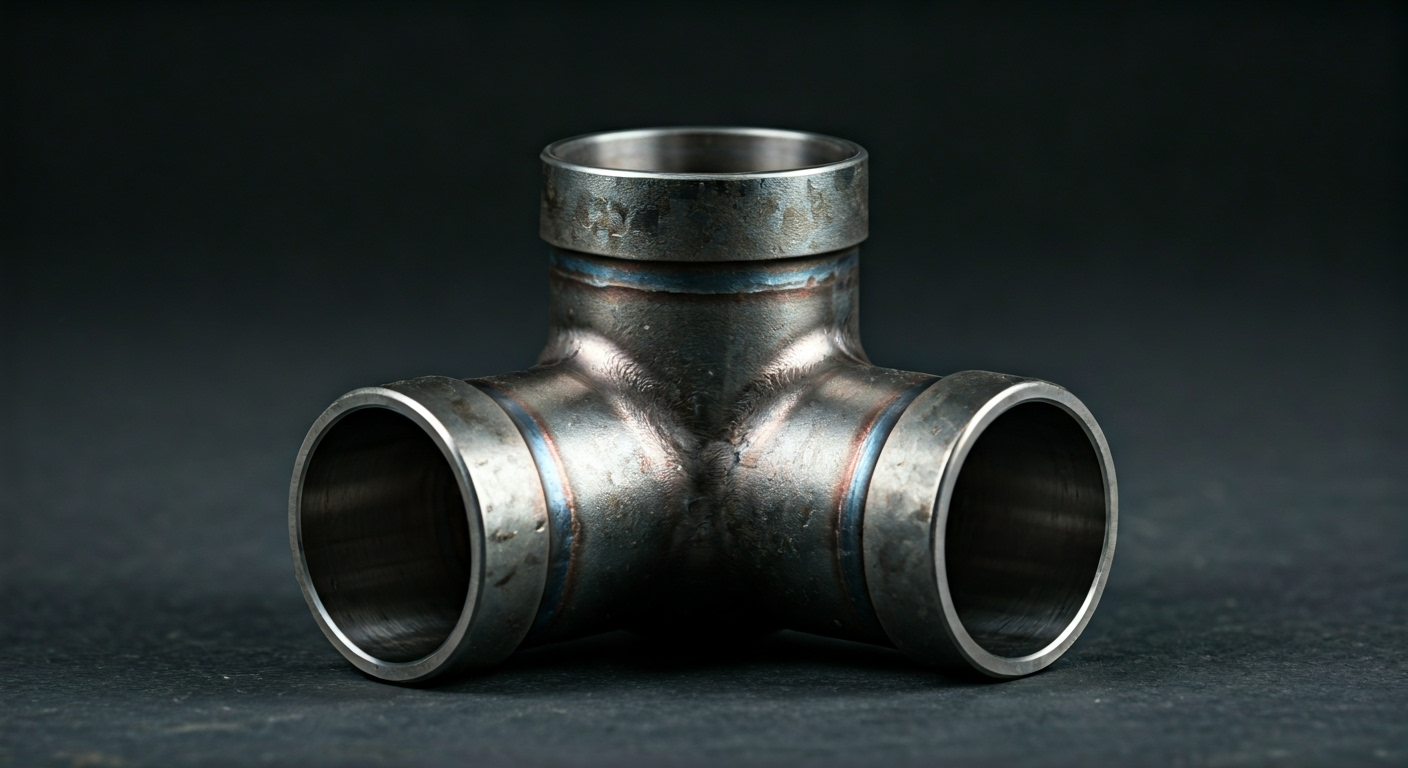
ASTM A234 WPB BW equal tees are made with care to keep up with strict quality rules. These fittings are made from carbon steel for strong and dependable performance. You will find them used a lot in pipeline systems, like those in oil and gas places. The WPB label in the ASTM shows that the material has the right mix of chemicals and stays strong under tough use. These butt weld fittings help the flow in one direction and still hold up well over time. They match well-known standards such as ASME B16.9, so they fit plenty of needs across big industries.
A234 WPB BW Tee Dimensions
Dimensions are very important for ASTM A234 WPB BW equal tees to fit well in pipeline systems. These pipe fittings come in sizes from 1/2″ to 48″. That size range lets them meet many flow needs and helps with a smooth change of fluid between pipes.
Wall thickness is listed using schedules like STD and XS. This helps the fittings handle different pressure levels. You find these exact wall thickness measurements and the strong tee design make the fittings flexible for many uses. They work in chemical processing or big building projects. There are careful checks to be sure each fitting has the right size and will last a long time.
ASME B16.9 Butt Weld Tee
ASME B16.9 standards define quality guidelines for butt weld tees, ensuring their durability and reliability in high-pressure systems. These standards specify dimensions like center-to-end measurements and outside diameters to guarantee uniformity, including specifications aligned with DIN standards. Butt weld tees under ASME standards are available in sizes ranging from small-diameter to large-diameter pipe networks.
Wall thickness is critical, with specifications denoted in Schedule STD, SCH 40, or SCH 80 to match application needs. These standards enforce optimal strength for stress-bearing pipelines.
Size (NPS) | Outside Diameter (mm) | Wall Thickness (Schedule) | Center-to-End Run (C) | Outlet (M) |
|---|---|---|---|---|
2″ | 60.3 | STD | 64 | 64 |
3″ | 88.9 | SCH 40 | 86 | 86 |
6″ | 168.3 | SCH 80 | 143 | 143 |
Such detailed design ensures compatibility with diverse pipeline systems and industrial standards.
Inspection
Inspection makes sure that carbon steel butt weld tee fittings match tough quality rules. This helps them stay strong in tough jobs. The checks include a radiographic test to see if the fittings are made without breaks or problems.
Material analysis looks at the chemical mix to match ASTM standards. The team also checks the size and wall thickness. This makes sure the carbon steel butt weld tee fits well in the pipeline.
- 100% radiographic testing finds any flaws.
- Third-party inspections help meet international rules.
- NABL-approved lab testing checks the strength of the fittings.
- Laboratory reports show if the fittings stand up to rust in different places.
These careful steps help make these butt weld tee fittings the best pick for heavy-duty pipelines.
ASTM A234 WPB Chemical Composition
ASTM A234 WPB gives clear rules for what goes into carbon steel equal tees. This makes them strong and lets them handle high pressure. The mix has carbon, manganese, and silicon. These help the fittings be strong and fight rust.
There are only small amounts of phosphorus and sulfur in the make-up. This helps the fittings be welded easily and stops them from breaking easily. This right mix helps with seamless butt weld bonding and makes the fittings last longer.
Quality checks make sure the fittings have the needed chemical make-up. This means these fittings, like carbon steel WPB butt weld types, can be used well for tough jobs in oil and gas pipelines.
ASTM A234 WPB Mechanical Properties
The mechanical properties of ASTM A234 WPB pipe fittings help explain why they are used in many industries. These carbon steel fittings have high strength. You can use them in a pipeline because they handle heavy loads and high pressure well.
The way they stretch gives the fittings enough flexibility when you put them in, and their pressure resistance means the fittings work in tough jobs like chemical processing. They also have good impact strength, so they work in both cold and hot environments.
These fittings have both toughness and strength. Because of that, they are a good fit for busy pipeline systems or when you need things to work well even in hard situations. You can trust them to work when other fittings may not.
Carbon Steel A234 Tee
Carbon steel A234 tees, including WPHY fittings, are known for their strength and long life. They are made with butt weld or seamless methods. This gives them good pressure strength. You can find these fittings in many places, like water treatment and petrochemical areas.
The A234 number shows they meet set rules for both how they are made and what they are made of. With NPS and different Schedule options, these fittings work well with many types of pipeline systems. They are also easy to weld, so big jobs are quick and simple to do.
These carbon steel fittings have many uses and are made in a strong, top way. This means they can handle hard jobs and help pipelines in the industrial field run well.
Surface Treatment
Surface treatment for carbon steel pipe fittings helps make them last longer and resist rust. Some common ways to do this are black painting, galvanizing, using epoxy coatings, and varnishing. These can protect steel pipe fittings while you install them and move them from place to place.
If the pipe fittings will be used in sanitary environments, there are special coatings to meet hygiene needs. Galvanizing is still a top choice when you put carbon steel pipe outdoors where it faces rain or harsh chemicals.
- Black painting helps the fittings fight everyday damage.
- Epoxy coating lets the fittings handle chemical exposure.
- Varnish gives fittings another layer of protection.
- Galvanizing keeps the steel pipe from rusting for a long time.
With these treatments, your carbon steel pipe fittings stay strong and in good shape, no matter where they are used.
Butt Weld Pipe Fittings Dimensions
Dimensions are very important for butt weld pipe fittings, including long radius fittings. They help people make sure that the fittings attach the right way in a pipeline. The diameters go from very small, like 1/2″ NPS, to very big, like 48″ NPS.
Wall thickness for these fittings is given in schedules, for example STD and XXS. This helps match what the pipeline needs for pressure. Getting the right thickness and size helps the fittings line up with the pipeline. This makes it safer when the pipeline is under high pressure or when it has to work for many years in an industrial place. Proper butt weld pipe fittings and wall thickness help lower risk and keep things working well.
Seamless Pipe Tee
Seamless pipe tees are known for being very reliable in high-pressure pipeline systems. They do not have welding joints, so there are fewer weak spots. This helps the pipeline last longer and perform well over time. The size and thickness of these pipe tees are set by NPS and SCH grades, so they can be used for many different flow needs, including those that require NPT fittings.
These tees are made using alloy steel, which helps them work well in tough places, like places with high heat or things that cause rust. Because they are made this way, they let fluids or gases move smoothly. That is why people use them in important jobs.
Their strong build makes them work well in fields like petrochemical and marine work. In these jobs, it is important to have parts you can trust.
Package
Packaging keeps carbon steel pipe fittings like equal tees and reducers safe when they are being moved. Exporters use strong ways to pack. They put steel pipe fittings in wooden cases for shipping to other countries. For smaller or local orders, fittings are wrapped with plastic.
Each fitting is marked so it can be tracked and meets global guidelines. The mark will show things like the company’s logo, the size, and grades. This makes it easier to find out what each part is.
- Wooden box packaging for exports can handle tough conditions during shipping.
- Customized marking means buyers get clear details when they ask for them.
- Fittings wrapped in plastic or bubble film stop them from getting damaged in local transport.
Using these ways helps keep the quality of carbon steel pipe fittings, reducers, and other fittings safe until you get them.
ASTM A234 Pipe Fittings
ASTM A234 pipe fittings are key for a lot of uses because they are strong and follow set sizes. These fittings, like concentric reducers and stub ends, help meet different needs in a pipeline system.
These pipe fittings use elements such as carbon and manganese. This makes them last longer and stand up well to rough factory settings. You can find these fittings as seamless or welded types. Choosing between them lets you match the right fittings to the pressure and job you have.
Stub ends make it simple to take apart and put back together flanged systems. This helps people save time when working on maintenance. Their special features keep the piping system working well for many industries.
Conclusion
To sum up, knowing the quality standards for carbon steel butt weld equal tee fittings is very important. It helps make sure that your products are safe and work well in many uses. There are big standards to follow, like ASME and ASTM, for carbon steel butt weld tees. These rules show what the material should be and detail the steps on how to check these items. When you follow these steps, the fittings, butt weld tees, and other products keep their quality and keep working for a long time.
Both makers and sellers of carbon steel butt weld equal tee fittings can get a lot by doing these checks. People and industries that use them also find these rules useful, as the fittings will be safe and work like they should. If you want expert help or more news about carbon steel butt weld or carbon steel products, reach out for a talk. It is a good way to get the answers that you may need.
Frequently Asked Questions
What are the main quality certifications for carbon steel equal tees in Singapore?
Carbon steel equal tees in Singapore meet ISO 9001 and ASME rules. These certificates show that there are strong checks on quality. They make sure the carbon steel parts match chemical and size limits. This helps give good results and trust in many types of jobs.
How is the quality of butt weld equal tees tested before supply?
The quality of butt weld equal tees is checked with many tests. These tests include looking at the inside with X-rays, checking the materials, and making sure the size is right. The tests help make sure there are no gaps, each one is made by the right specification, and the tees can handle work pressure.
What is the difference between an equal tee and a reducing tee?
An equal tee is a type of steel tee where the diameter is the same on every end. A reducing tee has a branch that is smaller in diameter than the main line. The tee you use will depend on what kind of flow you need and what pipe fitting matches your job. You should pick either a reducing tee or an equal tee by looking at your diameter and flow needs.
Are imported carbon steel butt weld tees compliant with Singapore standards?
Yes, imported carbon steel butt weld tees follow Singapore standards like SS and ISO. Third-party checks and certificates show that these carbon steel butt weld fittings meet the local rules for both material and size quality.
What industries commonly use carbon steel butt weld equal tees in Singapore?
Industries like oil and gas, chemical processing, and water treatment often use carbon steel butt weld equal tees. These fittings help to make strong pipeline connections. They also make it easy for fluid and gas to flow in tough places. Using carbon steel butt weld fittings can give good support for many types of pipelines.
